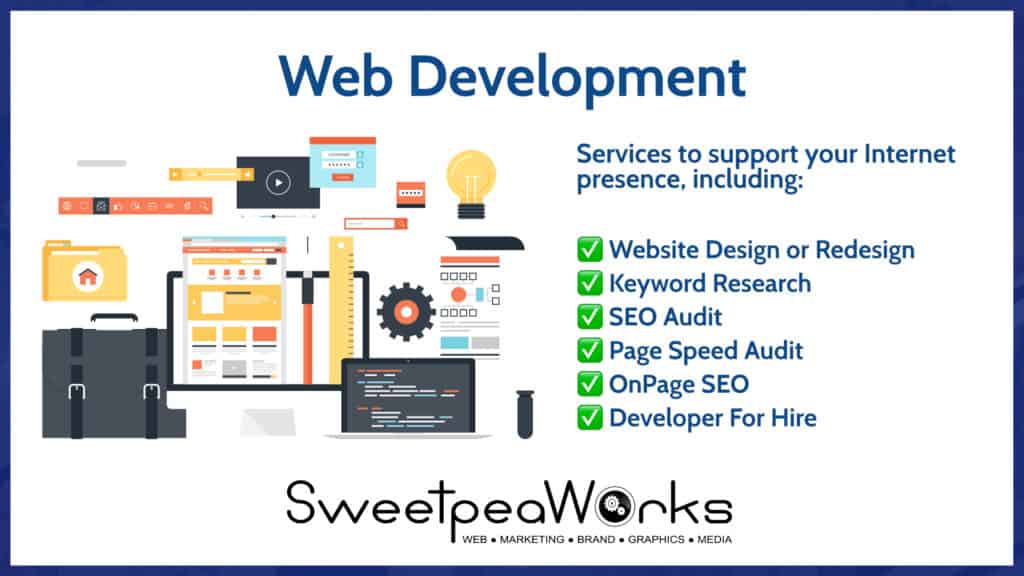The Importance of Professional Web Design
In today’s digital landscape, professional web design holds paramount significance for any enterprise. An elegant and efficient website often serves as the first point of contact between a business and potential clientele, setting the tone for their relationship. The design of a website is not merely about the aesthetic appeal—it encompasses structure, usability (function), accessibility (SERP) , and the overall user experience.
Importance of professional web design for businesses
One must acknowledge that in an era where competition thrives with every click, businesses cannot afford to present a subpar online presence. A professionally crafted website embodies the business ethos, delivers a strong brand message, and aligns with organizational goals. It acts as a platform where branding, marketing, and customer service converge, enhancing customer engagement and retention. Looking at most sales funnels, nearly all of your marketing will flow through your website!
Furthermore, search engines favor well-structured and optimized websites. Professional web design is tailored to cater to these aspects, ensuring high visibility in search results and translating into better traffic. Do-it-yourself platforms (and most low-cost web designers) never include this most important aspect of web development. This critical online real estate, when thoughtfully designed, becomes an invaluable tool for securing a competitive edge in the market.
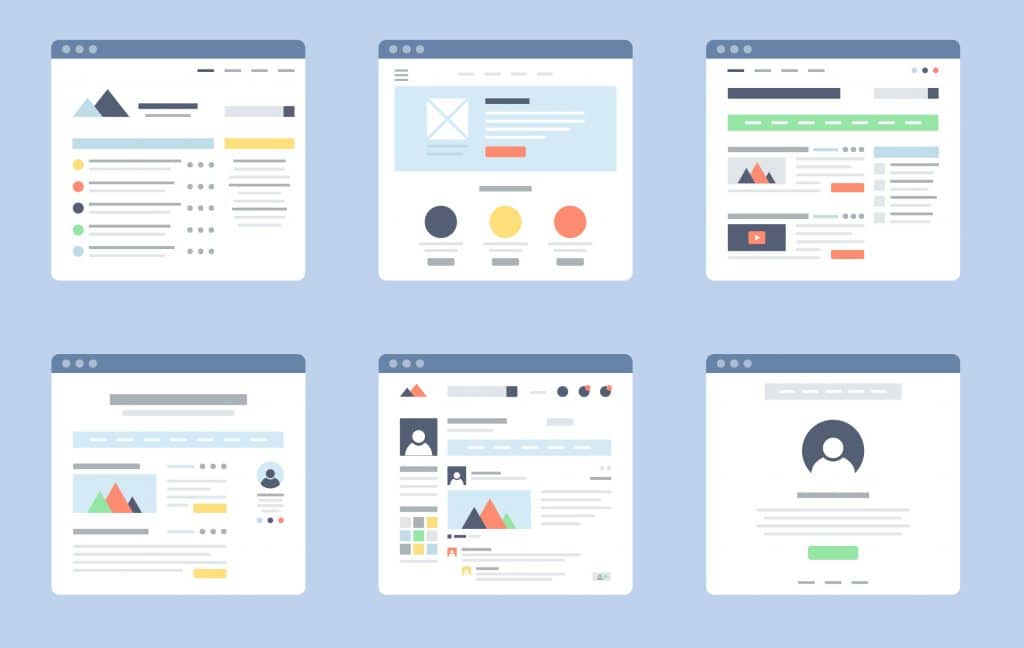

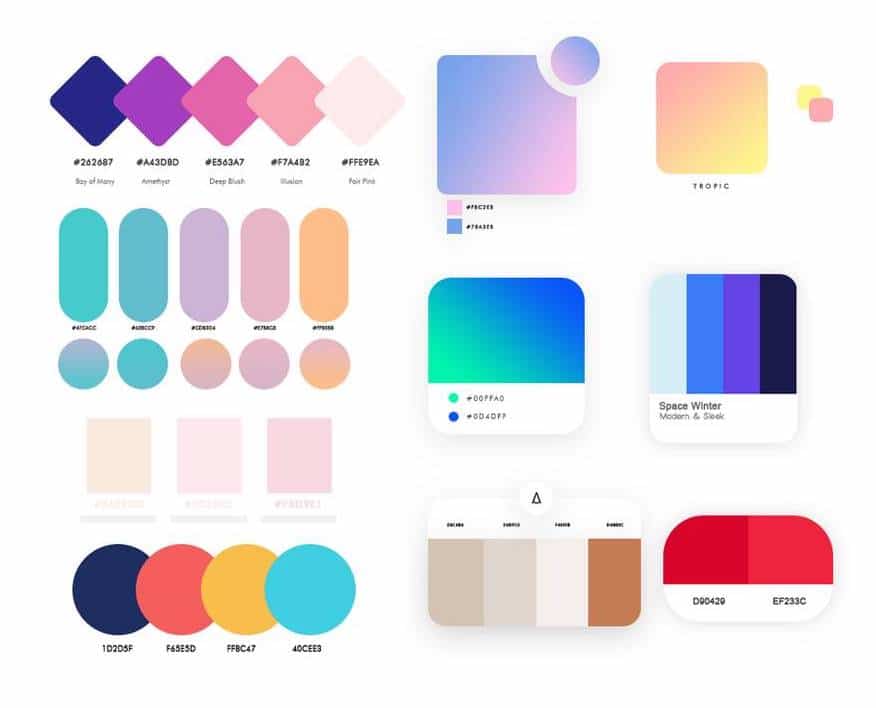
Understanding the intricacies of a website involves distinguishing between its two main components: the front end and the back end. The front end of a WordPress site is what visitors interact with directly. It encompasses the website’s design, including layout, colors, and fonts, as well as the content visible to the user, such as text, images, and multimedia. Essentially, the front end is the face of your website, designed to be engaging and intuitive for users. Creating your front end with templates is the selling point of most DIY platforms.
On the flip side, the back end of a website refers to the server-side infrastructure that powers the website. This is where site administrator (aka the webmaster), like Sweetpea Works, manages and maintains the website’s content, design, functionality, and the all-important SEO settings. The back end includes WordPress’s core software, themes, plugins, security, site optimization, and the database where all your site’s content is served to the public. While the front end is about the user experience, the back end focuses on functionality, security, and content management, improving SERP rankings making both equally crucial for the success of a website.
Benefits of investing in professional web design services
Embracing professional web design services has many benefits. From creating a responsive design that fluidly adapts to various devices to implementing SEO strategies that heighten online presence, these services are fundamental to success. Robust cybersecurity measures ingrained in the design protect both the business and its customers from potential cyber threats—another facet of the meticulous nature of professional web design.
Ultimately, investing in professional web design is more than just paying for a good-looking site. It’s about commissioning a comprehensive business asset that supports growth, fosters trust, and showcases a commitment to excellence. Companies that value their customers’ online experience demonstrate foresight and adaptability—traits that are appreciated and rewarded in the business world.

Sales Funnels: The Critical Role of Websites
A website is not just a digital brochure but a dynamic platform for interaction, education, and conversion. It’s where first impressions are crafted and where lasting relationships begin. In the context of a sales funnel, a website acts as the first, and sometimes the most critical, touchpoint. It’s where awareness is created, interest is piqued, decisions are influenced, and actions are encouraged.
Different Sales Funnel Utilization
- Awareness Stage: At the top of the funnel, websites can use SEO and content marketing to attract visitors. Blogs, infographics, and social media content are utilized to create brand awareness.
- Consideration Stage: Here, websites serve to educate and engage. Webinars, eBooks, and detailed product pages provide in-depth information to help visitors evaluate their options.
- Decision Stage: At this crucial juncture, websites employ persuasive elements like testimonials, reviews, and live demos. Clear calls-to-action (CTAs) and easy navigation toward purchase or contact pages are vital.
- Retention Stage: Post-purchase, websites focus on customer loyalty and advocacy through support pages, knowledge bases, and membership areas. This ensures a continuous engagement loop, turning customers into brand ambassadors.
In essence, a website is not just a part of the sales funnel; it’s the lifeline that sustains it at every stage. By offering a blend of content, personalization, and integration, websites can effectively guide prospects through their buying journey. As a result, businesses can maximize conversions, enhance customer experiences, and ultimately, drive growth.
Factors Influencing Costs
Understanding the factors influencing the cost of a professional website is crucial for organizations strategizing their digital presence. From the nuances of design to the intricacies of functionality, multiple elements dictate the final expense.
The Web Developer’s Experience and Knowledge
Highly skilled web developers bring an extensive portfolio and knowledge that can significantly impact the project’s cost. Their proficiency can streamline the process, ensuring not only aesthetics but also high functionality, which can be a worthy investment for a long-term digital solution. A skilled web developer also desires to become an expert in your industry to design a site that is highly effective in your sales funnel.
Content Optimization
Content is king in the digital world. Content generally refers to what the public sees. Investing in quality content that reflects the brand’s voice and engages the audience is paramount. Optimizing this content for readability and conversions is a factor that adds value and, in turn, influences the overall cost of the website. If you have a current website that is under performing, it means that your current content is not optimized and doesn’t engage your audience. An under performing website is also a strong indication that your SEO is weak or non-existent.
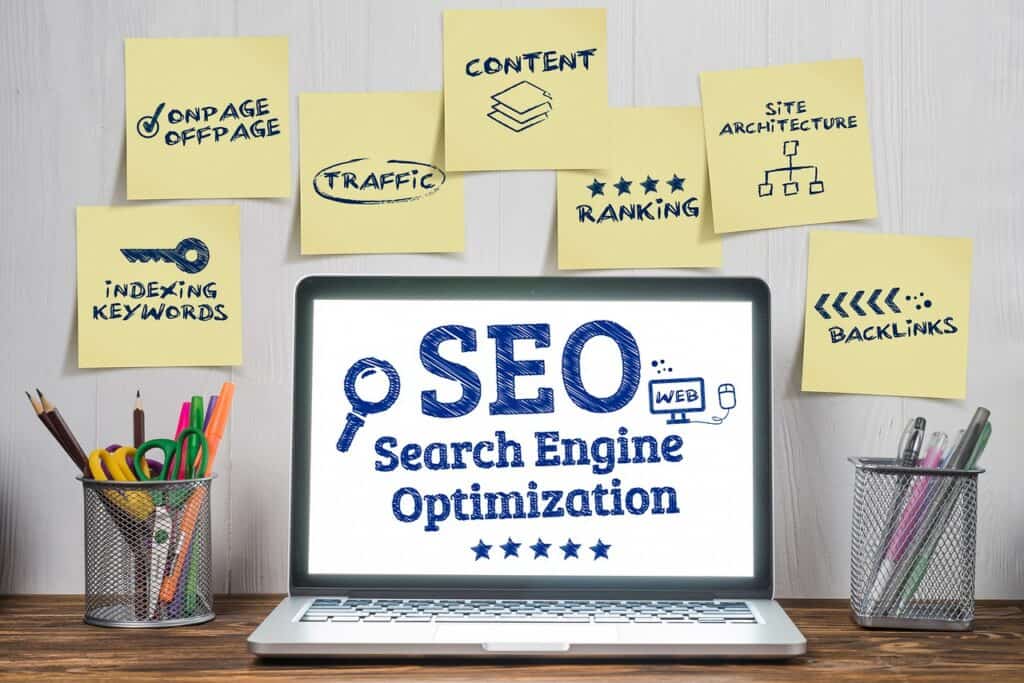
Search Engine Optimization (SEO)
SEO is integral to a website’s visibility and reach. SEO helps Google and other search engines connect your products/services with people who are looking for your offerings. There are two types. On-Page and Off-Page. For our discussion, On-Page SEO generally refers to behind-the-scenes of the website and has a major impact on getting and keeping visitors engaged. SEO strategies that improve SERP (Search Engine Results Page) rankings contribute to the overall cost. Tailoring content to meet SEO requirements requires a significant amount of time and expertise, and the long-term benefits of optimized content can outweigh the initial expense. Here are a few key components in SEO best practices.
- Keyword Research:
- Identify relevant keywords and phrases related to your content and target audience.
- Use professional tools to research high-volume and low-competition keywords.
- Title Tags:
- Include the primary keyword near the beginning of the title tag.
- Keep the title tag under 60 characters to ensure full visibility in search results.
- Craft compelling titles that entice clicks while accurately describing the content.
- Meta Descriptions:
- Write concise meta descriptions (around 150-160 characters) summarizing the page content.
- Incorporate relevant keywords naturally.
- Make meta descriptions engaging to encourage users to click through to your site.
- Header Tags (H1, H2, H3, etc.):
- Organize content with clear and hierarchical header tags.
- Use H1 for the main title and subsequent headers (H2, H3, etc.) for subheadings.
- Include keywords in header tags to signal the topic hierarchy to search engines.
- Content Optimization:
- Create high-quality, relevant, and engaging content that satisfies user intent.
- Include target keywords naturally throughout the content.
- Aim for a sufficient word count to provide comprehensive information (typically 500 words or more).
- Use variations of keywords and synonyms to avoid keyword stuffing.
- URL Structure:
- Keep URLs concise, descriptive, and readable.
- Include relevant keywords in the URL.
- Use hyphens to separate words for better readability.
- Image Optimization (tedious and very time-consuming):
- Use descriptive file names for images that include keywords.
- Optimize alt text to provide written context for visually impaired users and search engine crawlers.
- Compress images to improve page load speed without compromising quality.
- Internal Linking:
- Create a logical internal linking structure to connect related content.
- Use descriptive anchor text that includes relevant keywords.
- Ensure that all internal links are functional and lead to valuable resources.
- Mobile Optimization:
- Design responsive websites that adapt to different screen sizes and devices.
- Prioritize mobile usability for better user experience and higher rankings in mobile search results.
- Page Speed:
- Optimize website performance for fast loading times.
- Minimize HTTP requests, enable browser caching, and reduce server response time.
- Compress files and optimize code to improve page speed scores.
- Schema Markup:
- Implement structured data markup to provide search engines with additional context about your content.
- Use schema.org vocabulary to mark up elements like reviews, events, products, and FAQs.
- User Experience (UX):
- Prioritize user-friendly navigation and intuitive website design.
- Improve dwell time and reduce bounce rates by delivering valuable and engaging content.
- Enhance site accessibility for all users, including those with disabilities.
- SSL Certificate:
- Secure your website with HTTPS to encrypt data transmitted between the user’s browser and your web server.
- Google considers HTTPS to be a ranking signal that provides a slight boost to secure websites.

Security, Security, Security
In today’s digital age, website security is paramount, not just for safeguarding sensitive information but also for maintaining the trust and confidence of your users. A professional web developer understands that a breach in security can lead to significant losses, both materially and in terms of your brand’s reputation. Implementing robust security measures such as SSL certificates, regular software updates, and strong password policies helps protect against data theft, malware, and other cyber-attacks. Beyond the technical safeguards, fostering a culture of security awareness among your team and your users is equally crucial. In essence, prioritizing website security is not just about defense; it’s a strategic investment in your brand’s integrity and a crucial step in building a trustworthy digital presence.

Custom Images
Stock images can be useful and effective. However, custom visuals uniquely convey a brand’s message and identity. Bespoke images, graphics, and animations are created meticulously, which adds to the cost but can differentiate a professional website from a standard one.
Making informed decisions regarding these factors allows businesses to allocate budgets effectively and balance cost and quality for their professional websites.
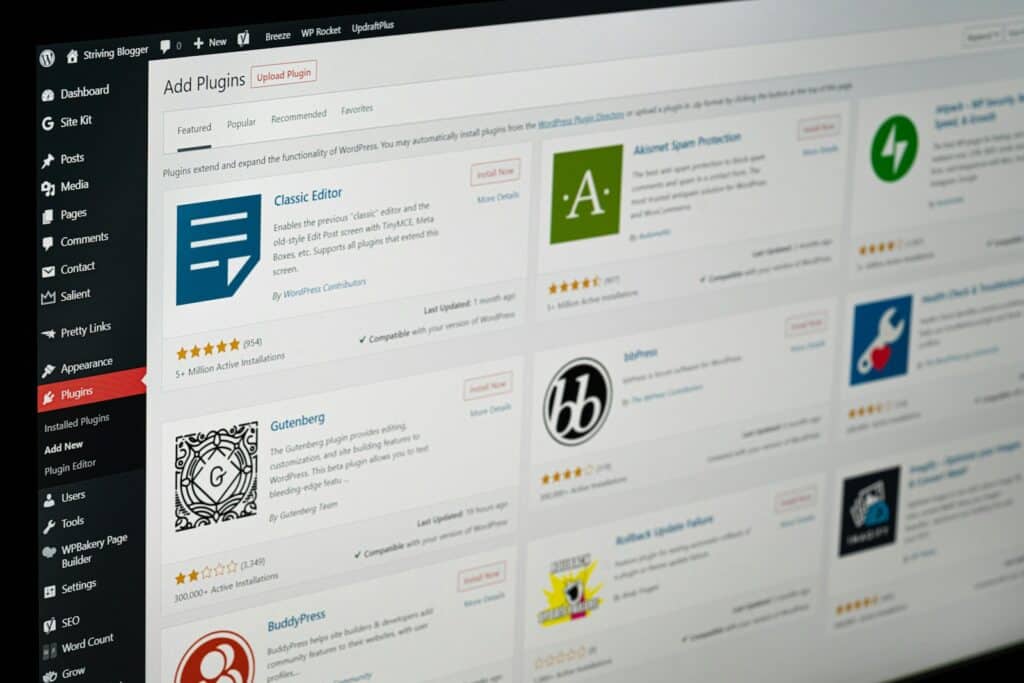
Specialty Plugins and Other Addons
Specialty plugins and additional add-ons play a pivotal role in seeking a professional website that stands out. As businesses strive for a digital space that is not just visually appealing but also rich in features, investing in these tools becomes essential. Specialty plugins enable the integration of advanced functionality, which can range from eCommerce solutions and social media feeds to custom forms and interactive content.
In particular, premium plugins, which often cost more than their free counterparts, offer a degree of reliability and support that can be crucial for a business depending on its website’s smooth operation. Another layer of expense is added when these plugins require regular updates or subscriptions to access the full range of their features and continually ensure compatibility and security.
Beyond plugins, other add-ons, such as content management systems (CMS), facilitate effortless content updates and maintain the website’s relevance over time. Additionally, integrating SEO optimization tools and services ensures that content is not only engaging but also reaches its intended audience effectively.
While incorporating high-quality graphics and multimedia is bound to elevate design costs, it’s a worthwhile investment for enhancing user experience and conveying the brand’s identity more dynamically. Consequently, these factors collectively influence the overall cost of creating and maintaining a professional website, but they also provide the necessary tools to stand out in a competitive digital landscape.
Exploring Different Pricing Models
Different pricing structures used by professional web design agencies
Professional web design agencies often adopt a variety of pricing structures tailored to meet the diverse needs and budgets of their clients. These structures accommodate the complexity, scale, and specific requirements of each web design project. By mastering the art of matching pricing models with client expectations, agencies enable businesses to invest wisely in their online presence.
Comparison of hourly rates, project-based pricing, and retainer models
The comparison between hourly rates, project-based pricing, and retainer models showcases the flexibility web design agencies offer. Hourly rates, or work-for-hire, are ideal for projects that require ongoing work or when the scope is not clearly defined. They allow for changes and pivots, and this transparent model allows clients to pay for the exact time invested in their projects.
In contrast, project-based pricing provides a fixed cost for the entire web design project, offering predictability and a clear budget from the outset. This model is particularly suitable for clients with well-defined project requirements and deliverables.
Subscription/Retainer models, on the other hand, are perfect for long-term partnerships. They allow clients to secure a design agency’s ongoing services over a period of time, ensuring their website continues to evolve with their business. This method typically involves monthly payments for specific tasks, cultivating a proactive and preventive approach to web maintenance and updates. With the right company, subscription/retainer models can also include other types of digital services, like marketing and branding. Some may offer subscriptions that also add graphic design and multimedia production. These would keep your business communications under one roof. Subscription/Retainer models usually require an up-front investment (on boarding) to build a new website or redevelop an under performing one.
Each pricing model has its own set of benefits, and when coupled with the right project, they lead to mutually beneficial outcomes. Agencies adapt to the dynamic nature of web design projects with these diverse pricing strategies, ultimately contributing to a prolific and vibrant digital economy.
Industry Standards
Understanding industry standards for pricing professional web design services
Within web design, industry standards for pricing are not only about competitiveness but also about the fair valuation of expertise and the complexity of services offered. The professionals in this arena have honed their skills to the point where they can easily discern the nuances in pricing strategies that will best suit the distinct requirements of their clientele. With a keen understanding of market demands and a commitment to quality, they set industry benchmarks that both represent the value of their work and align with clients’ expectations.

Average costs for website design and development project
The costs for website design and development often vary widely (hundreds to thousands of dollars) as they are influenced by numerous factors, including the type of industry, the size of the company, the size of the targeted audience, level of customization, and the specific features required. Experienced web designers and developers bring a profound insight into the expectations within different industry sectors, tailoring their services accordingly. The investment in a well-crafted website is framed by these professionals not only as a transaction but as a pivotal move toward the growth and success of a business. It’s an acknowledgment that a robust online presence can significantly amplify brand reach and operational efficiency, resulting in a synergistic impact on a company’s bottom line.
The optimistic view of web design pricing standards ensures that all parties view the development of a website as a strategic investment. In this landscape, businesses recognize the intrinsic value of high-quality web design and the tangential benefits it brings, from enhanced user experience to greater conversion rates. Website design has thus transformed from a mere operational expense to a vital component in the strategic planning of any modern business aiming for success.
Implementing Cost Optimization Strategies
Tips for optimizing costs without compromising quality
Efficiently managing web development costs requires sagacious planning and strategic execution. Web development experts often recommend leveraging scalable solutions that enable businesses to grow quickly. Forethought in selecting platforms and technologies that do not demand frequent overhauls can substantially reduce maintenance costs over time. Similarly, investing in responsive design not only caters to a wider audience but also dodges the redundancy of creating separate mobile versions, leading to notable savings.
Professionals advocate for a modular approach to design and development, which enables incremental enhancements without necessitating large-scale changes. By focusing on reusability and flexibility, these experts help businesses build a strong foundation that accommodates future growth. Open-source tools and platforms also emerge as a cost-effective yet robust option, alleviating the need for expensive proprietary software. With these guided methods, companies can maintain a high-quality online presence while judiciously managing their financial resources.
Strategies to keep web design expenses within budget
To ensure web design expenses remain within the set budget, seasoned professionals endorse clear communication of project objectives and limitations from the outset. This clarity eliminates misunderstandings and prevents scope creep, often leading to budget overruns. Web development experts emphasize the importance of a well-defined scope and collaborate closely with clients to prioritize features based on their value to the user experience and the overall business goals.
Adopting an agile methodology enables a structured yet flexible approach to development, where projects can be adjusted according to feedback without significant financial implications. The iterative process allows for continuous refinement and ensures resources are allocated to high-impact areas. Additionally, by keeping abreast of the latest trends and adopting cost-effective innovations, web professionals can deliver competitive and efficient solutions. Embracing these strategies, businesses find themselves positioned to harness the full potential of their online platforms without inflating their budgets.
“You gotta make up your minds, you gonna stay alive and ante up or play it cheap and be on welfare the whole winter.”
– Robert Shaw as Quint (Jaws 1975)
Conclusion
The significance of understanding the cost of professional web design services
Grasping the nuances of professional web design costs is a pivotal factor for businesses aiming to fortify their online presence. It’s not merely about spending money; it’s about making an investment that can yield measurable returns. When businesses comprehend the financial requirements for professional web design, they are equipped to make strategic decisions that align with both their online aspirations and fiscal realities.
Key takeaways for making informed decisions about web design investments
Business leaders must navigate the intricacies of web development with a balanced perspective. Practical and informed decisions derive from an understanding of what contributes to the costs and how they can be harnessed to enhance the company’s value proposition. By identifying the core objectives of their website, choosing the right platform, and investing in quality design and development, businesses can significantly trim down expenses while magnifying the impact of their web presence. A blend of skillful planning and execution is key, enabling the optimization of resources without sacrificing the caliber of the final product. The harmonization of economy and excellence in web design not only positions a company for growth but also ensures that the journey toward that growth is financially sustainable and strategically sound.
Sweetpea Works is happy to discuss your business communication needs and how we can help you reach and engage your audience, freeing your time to nurture leads and close deals. Visit us at www.sweetpeaworks.com.


